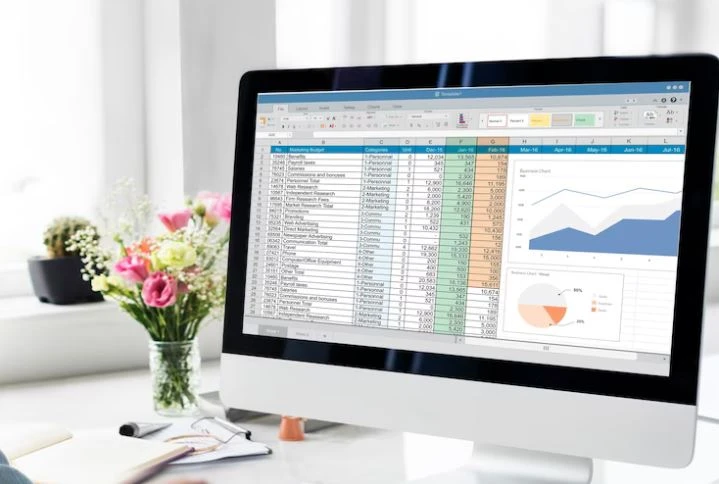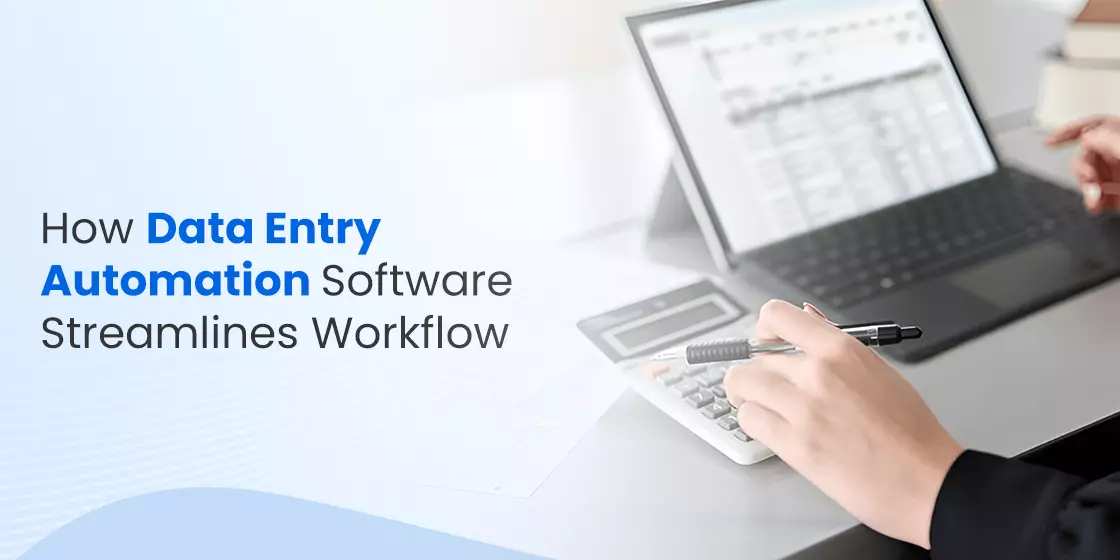Table of Content
Learn Why Businesses Need Data Entry Automation Software
Every business, big or small, deals with data every single day. Sales records, customer details, inventory logs, invoices, employee information—the list goes on. Traditionally, entering this data into systems was done manually. People would sit for hours typing numbers, names, and codes into spreadsheets or databases. It was tiring, slow, and left plenty of room for human error. Many businesses struggled to keep up, especially as data grew larger and more complex over time.
But the world has changed rapidly in recent years. Technology has taken over many tasks that used to require hours of human effort. One of the biggest changes is how we handle data. Instead of typing each piece of information by hand, we now have tools that can automatically collect, sort, and store data. These tools save time, reduce mistakes, and free up people to focus on more meaningful work. This is where data entry automation software comes in.
Built by professional software development services, data entry software is transforming the way companies operate. It takes repetitive, manual tasks and turns them into fast, automated processes. By using this software, businesses can handle more data than ever without the headaches of manual entry. Let’s explore what this software is, how it works, and why so many businesses are choosing to use it.
What is Data Entry Automation Software?

Data entry automation software is a digital tool that automatically captures, processes, and stores data without human intervention. Instead of someone typing numbers into a computer, the software reads data from different sources and enters it into the right systems. These sources might include scanned documents, emails, websites, PDFs, or even spoken words converted into text.
Just like ERP software, the main goal of this software is to save time and reduce errors. Manual data entry can be exhausting and is prone to mistakes. A single typo could cost a business money or damage its reputation. Automation software helps avoid these issues by working quickly and consistently. It follows programmed rules to ensure information goes exactly where it’s supposed to. This technology has become critical for businesses dealing with large volumes of data, such as finance, healthcare, retail, logistics, and many others.
Modern data entry automation tools often include smart technologies like Optical Character Recognition (OCR), machine learning, and artificial intelligence. These allow the software to “read” printed or handwritten text, recognize patterns, and even make decisions about where data should go. It’s like having a virtual assistant who never gets tired and works 24/7. As more businesses embrace digital transformation, data entry automation software is becoming a powerful tool in the modern workplace.
How Data Entry Automation Software Works

The working process of a data entry software is divided into three steps i.e. data collection, processing and storage. Here is a detailed explanation how each phase works to make the whole automation process very smooth.
Data Collection
The first step in data entry automation is collecting data. This is where the software grabs information from different places. It might scan physical documents, read emails, scrape data from websites, or capture information from apps and digital forms. Technologies like OCR are used to convert scanned images or PDFs into text that the software can understand.
In many cases, the software is connected directly to business systems like CRMs, ERPs, or databases. This means it can automatically pull data from one place and send it somewhere else. Just like a CRM software, this automation tool also can collect the customer’s details and order information without anyone typing it manually. The goal is to make the data collection process as fast and accurate as possible.
Data Processing
After collecting data, the software processes it. This is where the information is sorted, cleaned, and organized. The software might check for errors, remove duplicates, and ensure that all data follows the same format. For instance, it might correct spelling errors, standardize dates into the same format, or flag incomplete records for review.
Advanced software uses rules and machine learning to make decisions during this step. If a piece of data doesn’t match expected patterns, the software might pause and alert a human user. This ensures that only accurate and useful data moves forward in the process. Data processing is a critical step because it keeps business systems running smoothly and avoids costly mistakes later on.
Data Storage and Accessibility
Once the data has been collected and processed, it needs to be stored safely and made easy to access. The software saves data into databases, cloud storage, or other digital systems. Good data entry automation software ensures that information is stored in a structured way, making it simple to find later.
Businesses rely on this stored data for reporting, analytics, and daily operations. Quick access to reliable data helps managers make decisions faster and with more confidence. Many tools offer dashboards where users can see real-time information or generate reports with just a few clicks. Security is also crucial. The software protects sensitive information with encryption and access controls to keep it safe from unauthorized users.
Benefits of Data Entry Automation Software

Just like retail inventory management software, data entry automation software also offers many advantages for businesses across industries. Let’s look at some of the key benefits in more detail.
Saves Time
One of the biggest advantages of data entry automation is how much time it saves. Manual data entry is slow and repetitive. Employees might spend hours typing details into spreadsheets or databases. Automation software can complete these tasks in minutes or seconds.
This time savings allows employees to focus on more valuable work. Instead of typing numbers all day, they can analyze data, solve problems, or work on creative projects. For businesses, this means higher productivity and faster operations. Tasks that used to take days can often be finished in hours, helping companies stay competitive in fast-moving markets.
Reduces Errors
Humans are prone to mistakes, especially when doing repetitive work. Typos, missed fields, and data entry errors can cause big problems. A wrong number in a financial report or a misspelled customer name can lead to confusion, extra work, or even financial loss.
Data entry automation software dramatically reduces these errors. The software follows strict rules and doesn’t get tired or distracted. It processes data the same way every time, ensuring accuracy and consistency. While human oversight might still be needed for some tasks, automation helps eliminate many of the most common errors.
Lowers Costs
Businesses spend a lot of money on manual data entry. Salaries, overtime, and the costs of fixing mistakes all add up. By switching to automation, companies can lower these expenses. The software can handle high volumes of data without extra costs for overtime or hiring new staff.
Over time, the savings can be significant. Businesses can invest this money in other areas, such as innovation, customer service, or marketing. Automation also helps avoid costs related to errors, such as refunds, fines, or damage to a company’s reputation.
Improves Data Security
Data security is a major concern for every business today. Manual processes often involve printing documents, moving files around, or storing papers in filing cabinets. This increases the risk of lost documents, data leaks, or unauthorized access.
Data entry automation software helps improve security by keeping data digital and encrypted. Access controls ensure that only authorized employees can see sensitive information. Many tools also provide audit trails, showing who accessed or changed data. This helps businesses comply with regulations and keeps customer data safe.
Enhances Data Quality
Good data is essential for decision-making. Inaccurate, incomplete, or inconsistent data can cause confusion and poor business choices. Automation software helps improve data quality by checking for errors and enforcing consistent formats.
The software can flag missing fields, detect duplicates, and apply rules to ensure that data is clean and reliable. Businesses that rely on analytics or reporting need this level of quality to get useful insights. High-quality data helps leaders make smarter decisions and spot opportunities faster.
Increases Scalability
As businesses grow, their data grows too. A system that worked fine for a small business might struggle when data volumes increase. Manual processes can’t keep up with rapid growth.
Data entry automation software is highly scalable. It can handle larger amounts of data without requiring more staff or longer hours. Whether a business is processing hundreds of transactions or millions, automation makes it possible to keep operations running smoothly.
Provides Better Insights
Automation software doesn’t just enter data—it also helps businesses understand it. Many tools include dashboards and reporting features. Users can see trends, generate charts, and find important information with just a few clicks.
Having quick access to reliable data helps businesses respond faster to changes in the market. They can spot new opportunities, solve problems, and make better plans for the future. This ability to turn raw data into useful insights is one of the biggest benefits of automation software.
Frequently Asked Questions
| What is data entry automation software? Data entry automation software is a digital tool that automatically captures, and stores data without manual typing. It helps businesses save time, and manage large volumes of information efficiently. |
| What are the benefits of data entry automation software? Data entry automation software saves time, reduces human errors, and lowers operational costs for businesses. It also improves data accuracy, security, and makes information easily accessible for better decision-making. |
| Which data entry automation software are more popular in the market? Some of the most popular data entry automation software includes UiPath, Automation Anywhere, and ABBYY FlexiCapture. Many businesses also use tools like Microsoft Power Automate and Kofax for integrating automated data workflows. |
Final Words
Data entry automation software has transformed how businesses handle information. What used to take hours of typing and checking can now be done quickly and accurately by smart tools. From scanning documents to processing complex data and storing it safely, automation saves time, reduces errors, and makes life easier for everyone involved.
Companies of all sizes are discovering that automation isn’t just for big corporations. Small and medium businesses can benefit too, gaining speed, efficiency, and better data quality. Automation software basically ensures that the data is accurate, secure, and ready to use. It helps companies unlock new insights, serve customers better, and grow with confidence.
Empower your digital initiatives with BariTechSol, a premier custom software development company. Our skilled team tailors cutting-edge solutions to your unique needs. Elevate your tech experience and stay ahead in the digital realm. Partner with BaritechSol and code the success of your next big idea.


